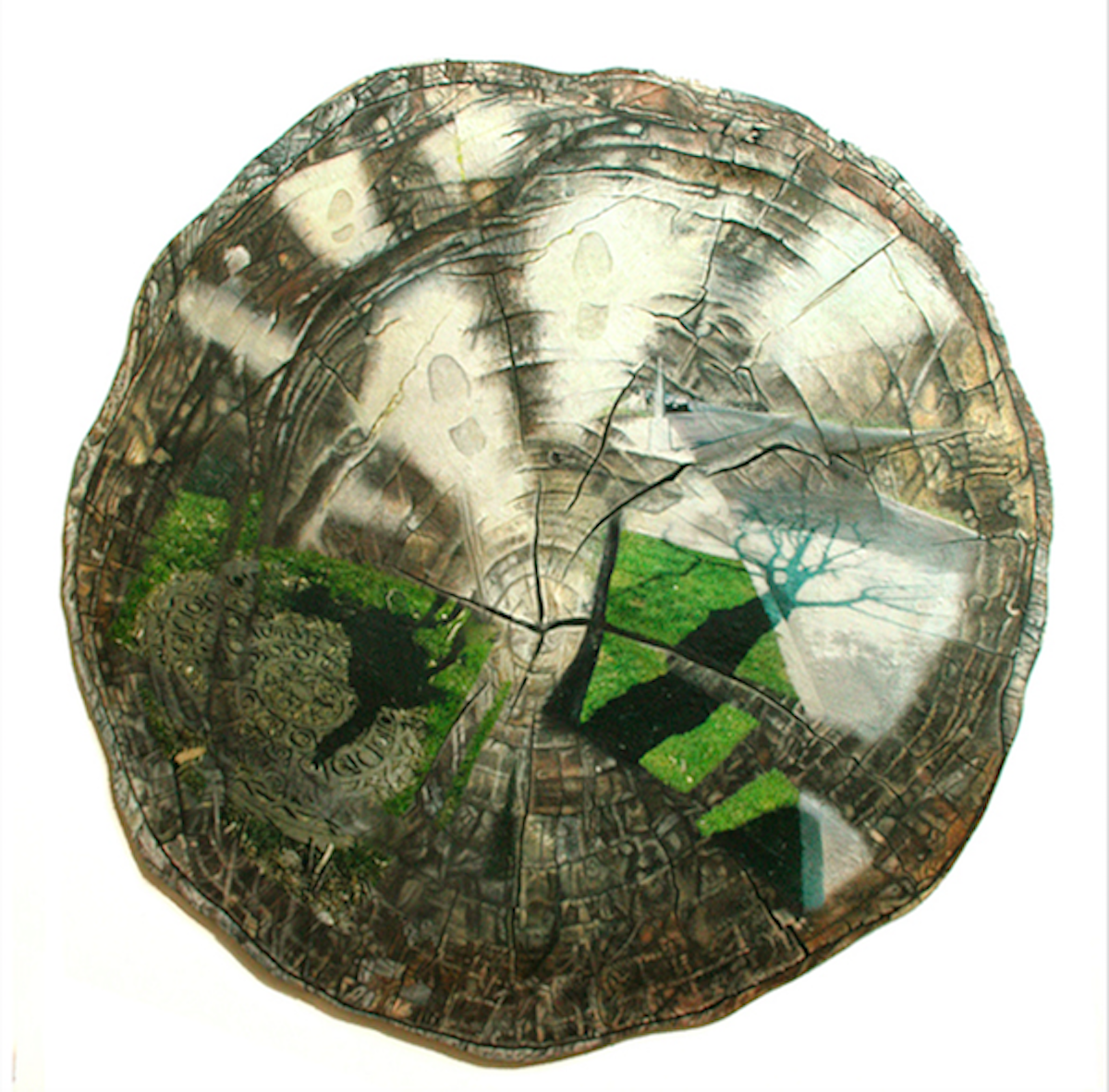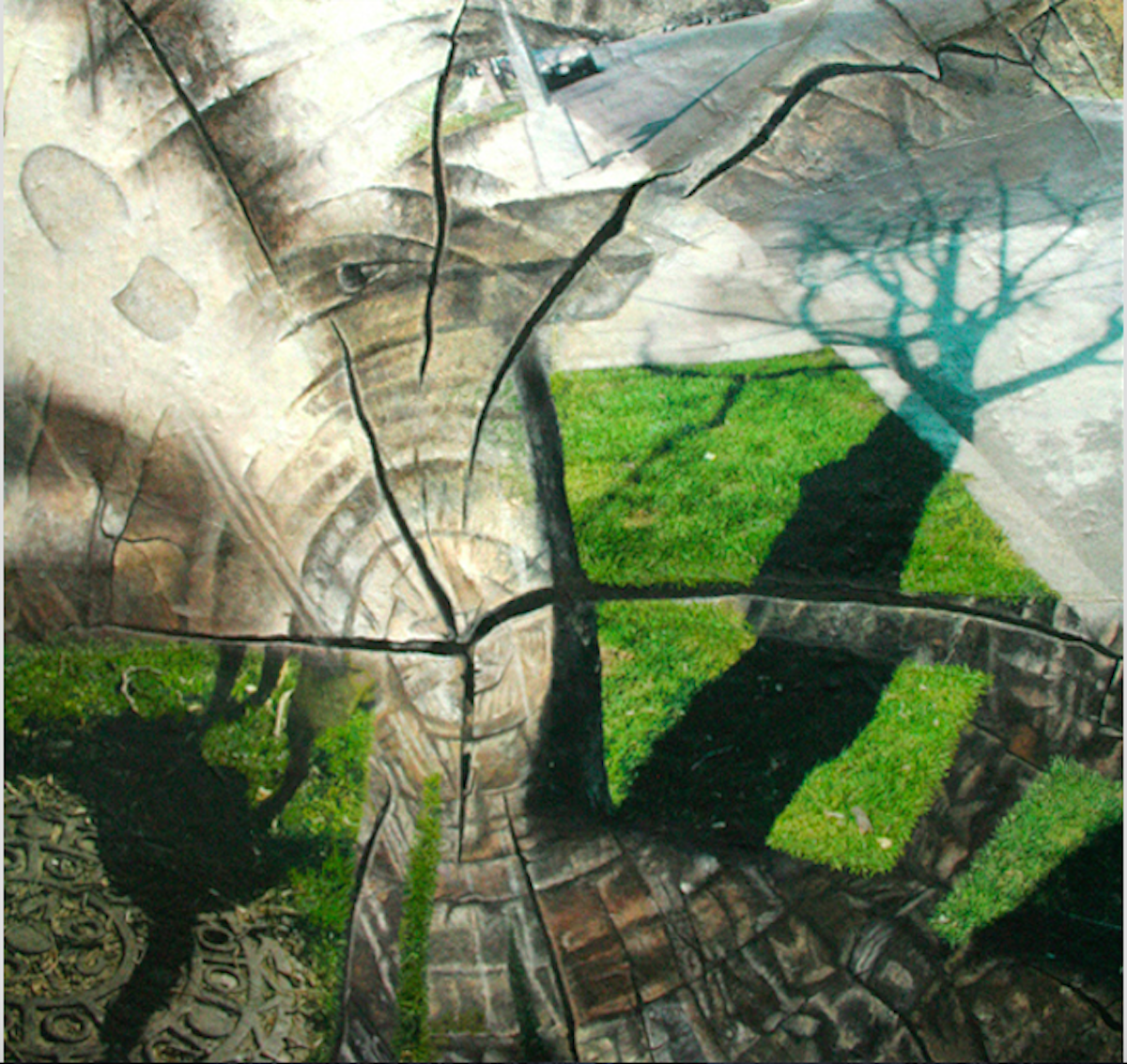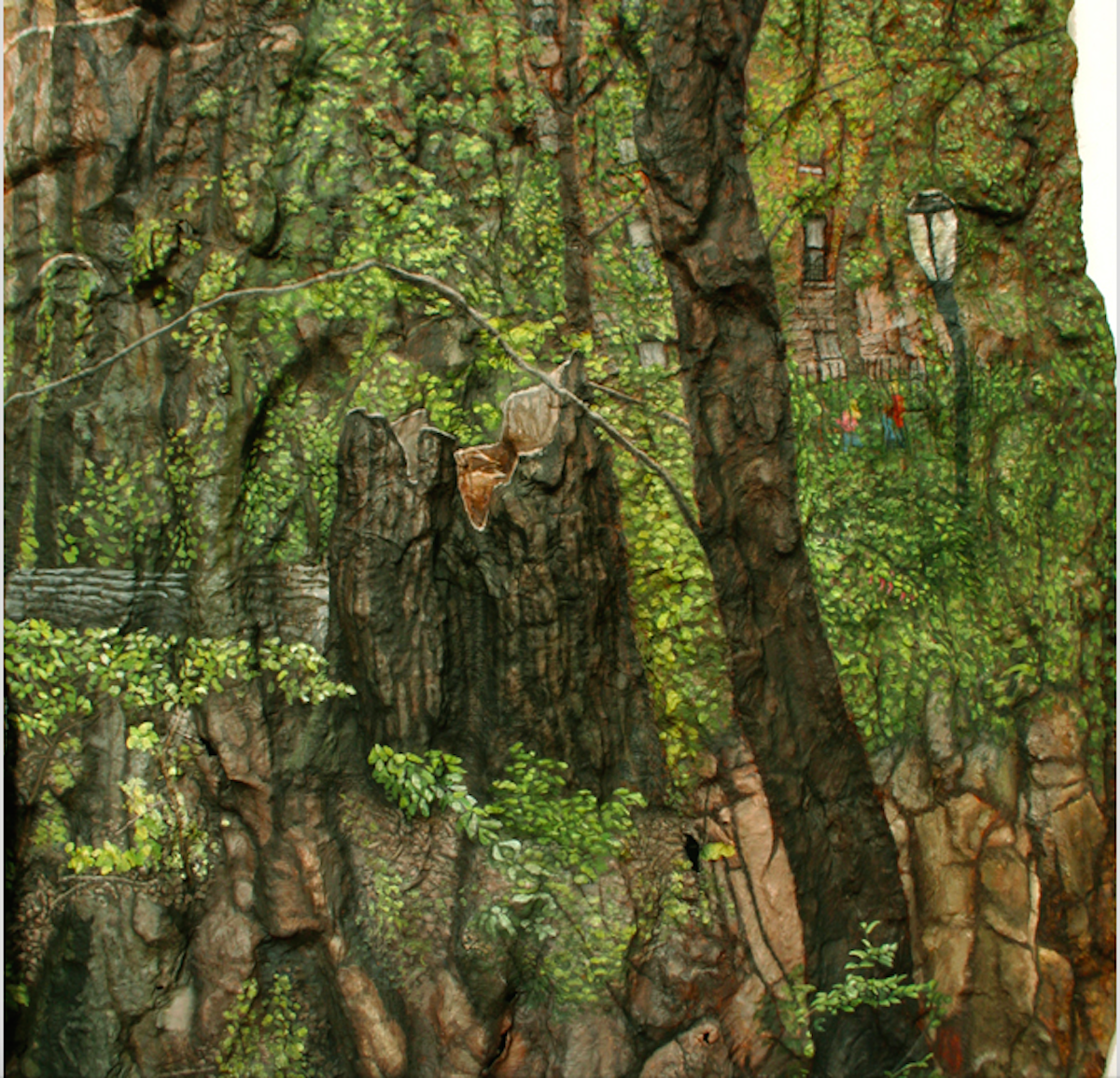Finding Balance In The Natural Environment Around Ditmas Park


The environment where an artist creates their work can show up in unexpected ways. If you peer out the second floor window of the farmhouse in the Berkshires where Herman Melville lived while he wrote Moby Dick, you can see the form of nearby Mount Greylock, looming on the horizon like the body of a massive whale, as the author’s friend Nathaniel Hawthorne noted.
The influence of the environment on Ditmas Park painter Kathy Levine seems initially more straightforward; both the trees of Brooklyn’s streets and parks, and the buildings marking human encroachment on the natural world, are visible on the surface of her works. But on closer inspection, Levine’s mixed media pieces reveal a more subtle and profound response to the neighborhood that’s communicated both in the content of the art and the process of making it.
(Levine will be participating in the Flatbush Artists open studio event this fall. She is also inviting residents to schedule a visit to her studio by going to the contact page on her website.)
“I Try To Use My Work To Connect People With The Natural World”
Even before moving to Ditmas Park, Levine’s work reflected her interest in exploring “the relationship between the natural and the artificial environments”. She explained that growing up in the fenlands of England she saw the benefits of human intervention on the land to create a fertile farming area, where previously there had been water and marshes that could not be cultivated.
Arriving in New York City in 1981, Levine felt overwhelmed by the artificial environment and took refuge in finding small areas where nature seemed to be thriving. In the mid to late 1990s, after moving to Ditmas Park and seeing the way trees and plants were integrated into the neighborhood, she began to look at things differently. “It gave me a hope for a new equilibrium, and I started to see a different energy, a strange balance in things coming together.”
The strange balance is the theme of “Crosecitree,” a mixed media piece painted on handmade paper. The paper is mounted on an armature of wood and wire that gives the appearance of an image appearing on a cross section of an actual tree trunk.

The piece records actual details from Rugby Road; the shadow of a tree and a broad expanse of green grass. Using both painting and photo-transfers from photographs taken at the site, one is able to see footsteps embedded in the concrete sidewalk, the shadow of a dog, a sewer cover, cars parked on a street, and a tree.
The images are reminders that “human and other forms of life are flourishing in what seems like a hostile concrete, metal and asphalt setting filled with acrid air and contaminated soil,” says Levine. That complex relationship between the natural and urban is not only what’s seen in the piece: it’s what the work is made from. Levine recycles paper to make the canvas for her painting.
The paper starts as wood, reduced to pulp and then fabricated for newsprint or copy paper. Levine takes that evidence of man’s mark upon the environment and soaks and boils it to return the paper to a pulp. Then she casts it, often on a natural mold like bark, branch, or leaf, recreating in a way the natural origin of the material. After the pulp dries, leaving the form and texture of the bark beneath, Levine adds images of both man and nature. “I try to use my work to connect people with the natural world.”
“Underneath Is The Natural World, Which Is Surviving And Hopefully Still Viable”
In a short film by Alizee David posted on Levine’s website, the artist explains another mixed media technique which expresses that theme of the strange balance. “I actually take photographs, then make copies of them, and use an acrylic polymer emulsion that I coat on the photo-copies…Afterwards, when the emulsion is dry, I’m able to remove the paper on both sides, which leaves a very thin skin with the image embedded in the emulsion.”
Applying the emulsion to her handmade paper cast on a mold from a piece of bark, or a human hand or face, “the photo-transfer is on top, which is the world that we create,” Levine said. “But underneath is the natural world, which is surviving and hopefully still viable, even though we are doing some horrible things sometimes to it.”
“So I’ve actually achieved an integration of the photograph with the paper and the painting and the other materials — in a similar way that I’m trying to integrate the natural and the urban environment. So it’s kind of been a parallel journey with the two — with my process and also with my ideas and concepts.”
That integration of ideas and process is displayed majestically in the large work “Prospect Park Tree – After Sandy.” Levine has been working on the piece for a year, and she’s still creating additional panels that may keep her busy for another year or more.

The piece is an homage to a red oak that fell in the park during the storm, she explained, and the paper that it is painted on is actually cast from the stump of the fallen tree. “It must have been 100 or 150 years old, and 50 or 60 feet high.”
The paper captures the texture of the stump, and natural images dominate that scene. The stump itself appears twice in the work, as does the horizontal trunk of the uprooted tree, which provides the cast for the additional panels Levine is creating.
“The image subtly presents man’s impact on the environment,” but the various elements reflect the complexity of that impact. The painting is a reminder of nature’s destructive force—the storm that uprooted the titular tree ravaged a park where we strive to save a pristine space within our city. But the storm itself was also the product of global warming, perhaps the ultimate expression of man’s destructive force.

“The work memorializes this tree and the living world that we are rapidly destroying by releasing too much carbon into the atmosphere” Levine wrote in an artist’s statement about the piece.
While the content is dominated by trees and other natural imagery, there are also signs of the urban environment in the picture. There’s a street, a bike lane, a traffic sign: details of modern life visible even in a park set aside to preserve what’s natural.
But the human details, as well, communicate the complexity of the “strange balance” Levine sees around her. She’s painted a couple of kids playing around the fallen tree, a portrait of two boys who helped Levine cast the paper she used to create the work.
Levine’s concern with the push and pull of nature and the urban environment isn’t limited to the content and processes embodied in her mixed media pieces. She’s pursued it outside her work; she was a founding member of City Artists in Response to Nature.This group of New York City-based artists “explored their individual and collective need to connect with the natural world in a contemporary way,” Levine notes.
Levine has also recruited a group of volunteers in the neighborhood to help care for young trees planted in Ditmas Park. “About 50 percent of trees die in the early years after being planted,” she explained, so the group nurtures them in their early years. To participate, email Levine at kathylevine1@gmail.com.
Levine has also worked as an artist in residence, at Yellowstone National Park, and most recently at Indiana Dunes National Lakeshore. The latter residency led to two exhibitions in that state for the coming year, in Chesterton, IN during April and May, and at Munster’s South Shore Arts Gallery from June through September.



